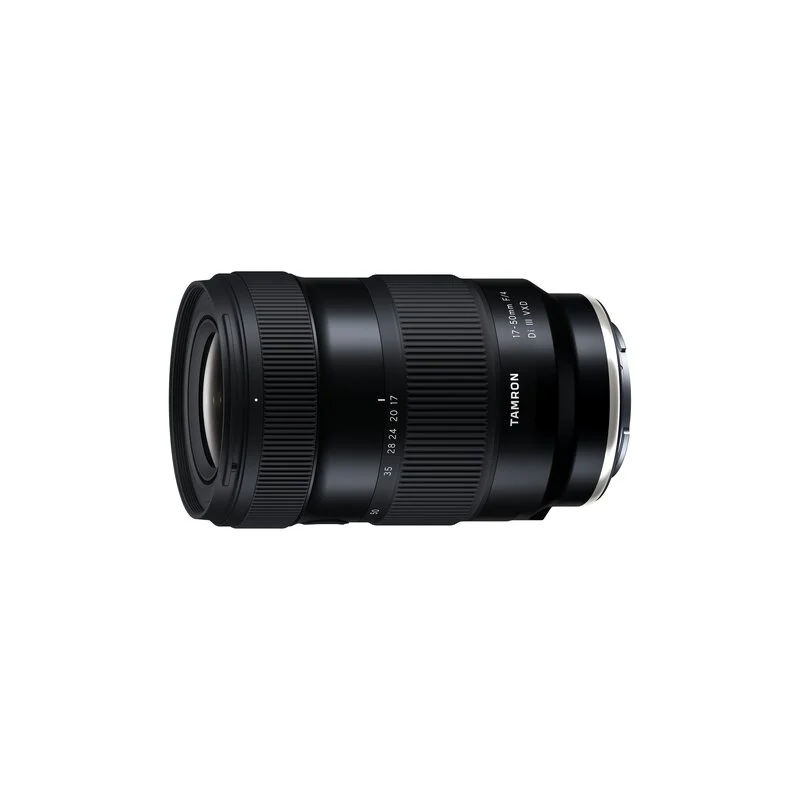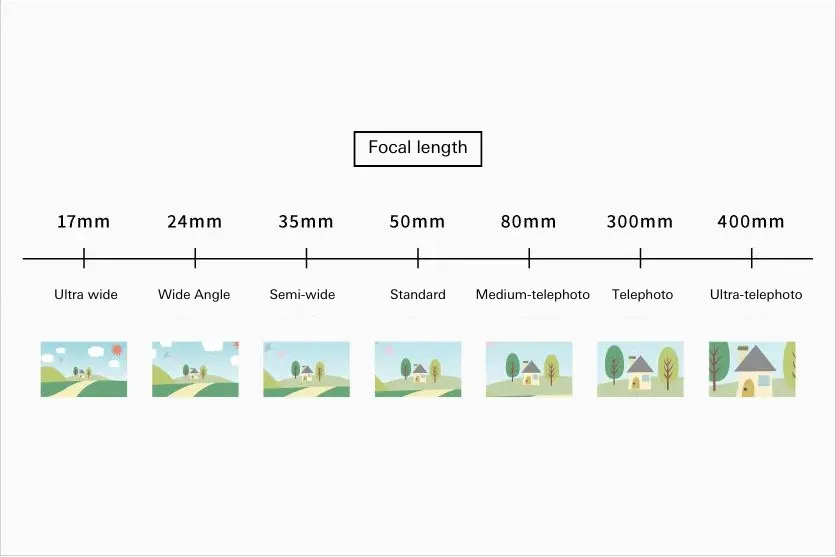August 30, 2024
All you need to know about standard zoom lenses! We explain usage scenarios and key tips for choosing the right lens
All you need to know about standard zoom lenses! We explain usage scenarios and key tips for choosing the right lens


In the world of photography, the lens used is an important element that greatly affects the breadth of expression available to the photographer. Among them, standard zoom lenses are a favorite of many photographers due to their versatility and convenience. In this article, we will give detailed explanations covering everything from the basic characteristics of standard zoom lenses, the scenarios in which they are used, and how to pick the best lens.
A zoom lens is a lens that allows you to change the focal length, and they are mainly categorized as wide-angle zoom, standard zoom and telephoto zoom. A standard zoom lens is a zoom lens that covers focal lengths before and after around 50mm, and sits in the middle between its wide-angle and telephoto counterparts. As this type of lens covers angles of view that approximate human vision, it is referred to as “standard.” As a standard zoom lens allows you to shoot at this natural angle of view, they are known for their versatility that is suitable for any occasion.
Note that the focal length range is expressed in mm (millimeters), and is stated as part of the product name. The lower the number, the wider the angle the camera can capture. Generally speaking, focal lengths of 35mm and lower indicate wide-angle lenses, around 50mm for standard lenses, and around 80mm and upward for telephoto lenses.
A prime lens differs from a zoom lens in that its focal length is fixed. In general, prime lenses are known for their high resolving strength and beautiful bokeh expressions. Moreover, as many prime lenses are designed with a large maximum aperture (indicated by a low F-stop value), they gather a large amount of light, making it easier to maintain bright exposure.
However, since the angle of view is fixed and you cannot zoom, the photographer needs to move to adjust the distant from the subject. In contrast with a zoom lens, since you can change the angle of view from the wide end to the telephoto end with a single lens, its benefit is the ease with which you can adapt to a wide variety of situations.
A wide-angle zoom lens has a focal length range around 35mm or less at the long end. Compared with a standard zoom lens, the angle of view is wider, and the depth of field (the range over which a subject is in focus) is larger, meaning a greater range of elements within an image will be in focus.
Another feature of wide-angle zoom lenses is that you can obtain effects that emphasize perspective, where nearby objects appear larger and distance objects appear smaller. That is why wide-angle zoom lenses are effective when you want to capture dynamic scenes with a landscape spreading out before your eyes, such as with natural scenery.
A telephoto zoom lens has a focal length range of around 80mm or greater and the wide end. It has a narrow angle of view, which allows you to capture faraway objects with an enlarged view. And due to their shallow depth of field, these lenses can more easily produce bokeh in the background. Telephoto zooms excel in their area of specialty, shooting subjects that are far away, such as in sports or wildlife photography.
Another big feature of telephoto zooms is the compression effects (a compressed sense of distance where faraway objects appear closer together) that can be obtained. A typical example of this is portraits that make use of background bokeh.
As you can see from the comparisons with wide-angle and telephoto lenses, the biggest feature of a standard zoom lenses is its ability to capture a scene that approximates how the photographer sees it with their own eyes. That’s why the greatest benefit of a standard zoom is its versatility in being able to adopt to various scenarios without being limited to specific subjects. But among those various shooting situations, here are several where we recommend the use of a standard zoom lens.
A standard zoom lens allows you to photograph subjects with a natural angle of view, sense of distance and mood. That makes them great for shooting snapshots and portraits of people. By making use of the direction of light (direct light, back light) and bokeh in the background, you can take impressive portraits.
Additionally, as a standard zoom lens lets you shoot at a reasonable distance from the subject, another benefit is the ability to call out to the subject while photographing them. The distance also makes a standard zoom suitable for expressing intimacy, warmth or a sense of tension depending on the relationship with the subject.
Standard zooms lenses allow you to take photos of architecture, streetscapes and scenery with an angle of view from someone walking around. In addition to capturing the entire scene unfolding before your eyes, you can also zoom in on specific elements in a scene that grab your attention. To prevent your pictures from looking bland, we also recommend focusing on the angle of view and composition. Experience with various angles of view and compositions, such as shooting buildings or street scenes at an angle using the wide end of the zoom, or focusing on distance buildings at the telephoto end.
While wide-angle lenses are typically used for natural landscapes, by using a standard zoom lens you can capture a scene as-is, with an angle of view that is close to what you see with your own eyes. By focusing on flowers or other elements at a closer distance rather than an entire scene, you can give the impression of actually being there in your images.
As a standard zoom lens allows you to cover some extent of the wide-angle and telephoto ranges with a single lens, even if you don’t carry many lenses, you will be able to easily capture natural landscapes during travel or while on a walk.
A standard zoom lenses is useful for table photos, as it lets you capture images with a natural angle of view while properly rendering fine details in tableware, food and so on. You will be able to take impressive photos by shooting from different angles, or focusing on the target food or tableware and producing bokeh effects in the other table-top elements. Another feature of a standard zoom lens is that it allows you to shoot while seated at a table without any discomfort.
When photographing pets, you can express your close relationship with them in a natural manner. By getting down to the pet’s eye level as much as possible and utilizing bokeh in the background, you can properly capture their facial expressions while having them stand out from the background as the main subject. A standard zoom lens also lets you shoot at comfortable distances even in cramped indoor spaces.
When choosing a standard zoom lens, it’s a good idea to make comparisons based on maximum aperture, focal length range, compactness and other factors. In addition, autofocus (AF) and vibration compensation mechanisms make it easier to reliably take shots with high image quality. Minimum object distance is another important factor, as it broadens the range of expression.
The f-stop value (aperture) of a lens is an indicator of how much light it gathers and the amount of bokeh it produces. The more the aperture is narrowed (which increases the f-stop value), the less light is let in, and the smaller the bokeh effect. The f-stop of a lens with its aperture is wide open is known as the “maximum” or “wide-open” aperture. Since you cannot reduce the f-stop value of a lens below this wide-open setting, the smaller this f-stop value is, the greater the amount of light the lens can take in, and the shallower the depth of field it can produce, resulting in greater bokeh.
For this reason, a lens with a large maximum aperture (a small f-stop value) is useful when using a high shutter speed in conditions with minimal light, such as indoors or cloudy weather. This will also make it easier to take photos that bear the hallmarks of an interchangeable lens camera photos that make use of a lot of bokeh.
One of the advantages a standard zoom lens enjoys is its suitability for a wide variety of scenes, regardless of the subject. Additionally, we recommend one that is lightweight and compact, as it can be carried to various locations and make it easier to take photos that involve the photographer moving around a lot. When you want to reduce the amount you carry such as when traveling or mountain climbing, or when you need ease of handling in cases such as snapshot photography, a lightweight and compact lens is extremely useful.
When you get closer to a subject than the minimum object distance of your lenses, you will not be able to achieve focus. Therefore the shorter the minimum object distance of a lens, the closer in you can focus on subjects. As a shorter minimum object distance increases the variations possible with a single lens, it broadens the range of your visual expression.
The performance of the AF mechanism in a lens is important for ensuring you can capture decisive moments. Check that the lens is able to smoothly pick up a subject and quickly focus in on it, and whether it continues to properly track moving objects. To prepare for shooting in situations that require quiet, you should also check the motor noises made with the AF is operating.
Standard zoom lenses are known for allowing you to shoot with a natural angle of view that approximates human vision. Standard zooms flourish in a wide range of shooting scenarios from landscapes to pet photography in addition to snapshots and portraits. When choosing a lens, check the focal length range, f-stop, AF performance and other features to make sure you can take photos that match your vision.

Lens Featured in this Impression
-

-
20-40mm F/2.8 Di III VXD a062(Model )
The 20-40mm F/2.8 Di III VXD (Model A062) is a new large-aperture standard zoom lens that thoroughly pursues portability. While covering the range from the ultra-wide angle of 20mm to the standard range of 40mm, it is the smallest and lightest in its class. It also offers high image quality throughout the entire zoom range, making it useful not only for still image shooting but also for video recording such as vlogging. The VXD, which is quiet and agile, achieves high-speed, high-precision autofocusing. It is a new, unprecedented large-aperture standard zoom lens that allows users to easily enjoy taking out and shooting both still and video.
-

-
17-50mm F/4 Di III VXD a068(Model )
It's the world’s first lens covering from ultra wide-angle 17mm to the standard 50mm focal length. The highly-compact TAMRON 17-50mm F/4 Di III VXD (Model A068) for Sony E-mount full-frame mirrorless cameras offers maximum versatility for still and video creators. From landscapes to living rooms, this lens captures all that you see.
-

-
28-75mm F/2.8 Di III VXD G2 a063(Model )
Product Page | 28-75mm F/2.8 Di III VXD G2 (Model A063) is the second-generation fast-aperture standard zoom lens for Sony and Nikon full-frame mirrorless cameras, offering significantly improved optical and autofocus performance and new function customization.
-

-
17-70mm F/2.8 Di III-A VC RXD b070(Model )
The 17-70mm F/2.8 Di III-A VC RXD (Model B070) is a large-aperture standard zoom lens for APS-C format mirrorless cameras. With a focal length range of 17mm to 70mm (a full-frame equivalent of 25.5-105mm) for daily use, this achieves a 4.1x zoom. The optical design ensures high resolution and high contrast not just in the center of the image but also in corners and at the edges. The quiet AF drive motor and the VC image stabilization mechanism facilitate hand-held shooting. In addition, by counteracting focus breathing, the 17-70mm F2.8 empowers users' expression of their creative intentions to the fullest degree. This highly practical lens allows you to easily enjoy the high image quality of a large F2.8 aperture for both still and video shooting.









